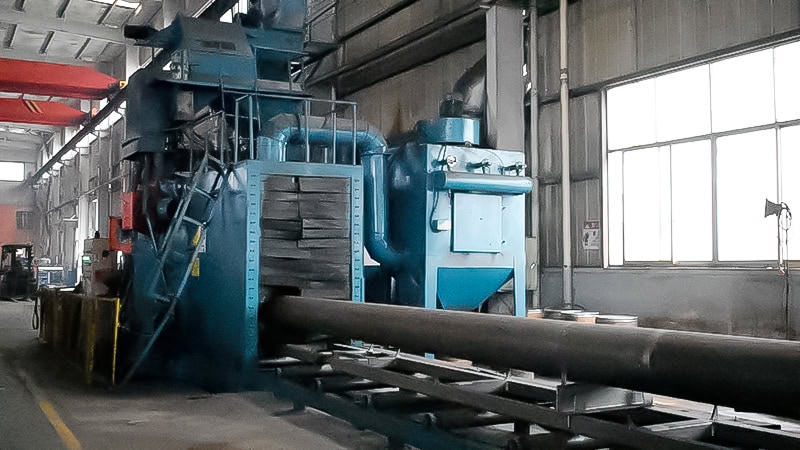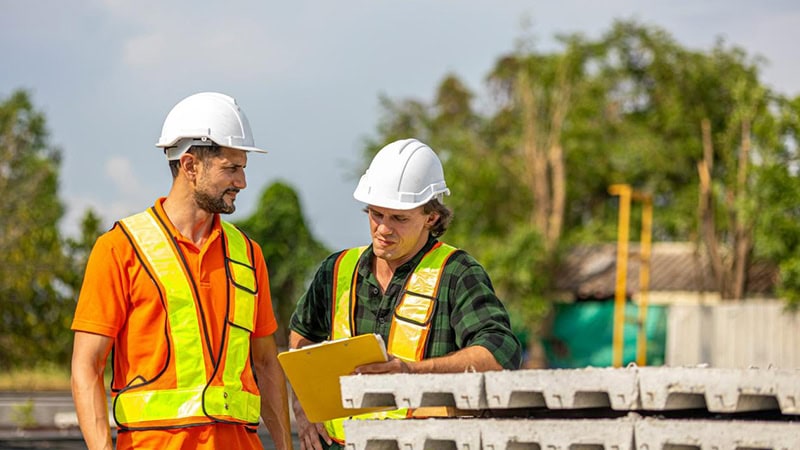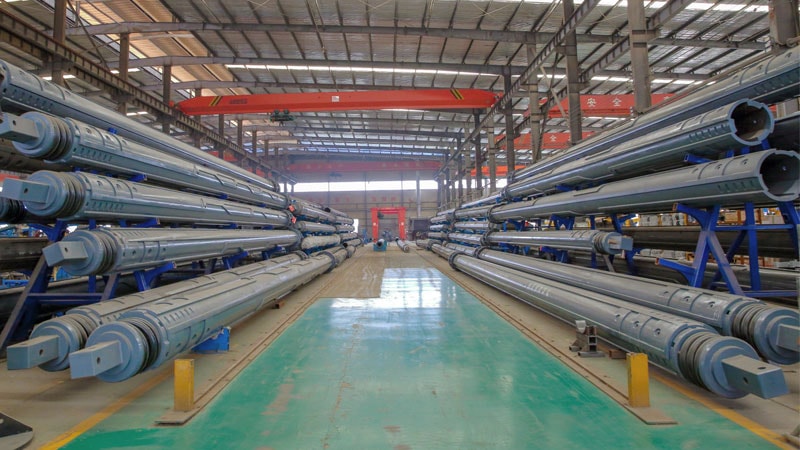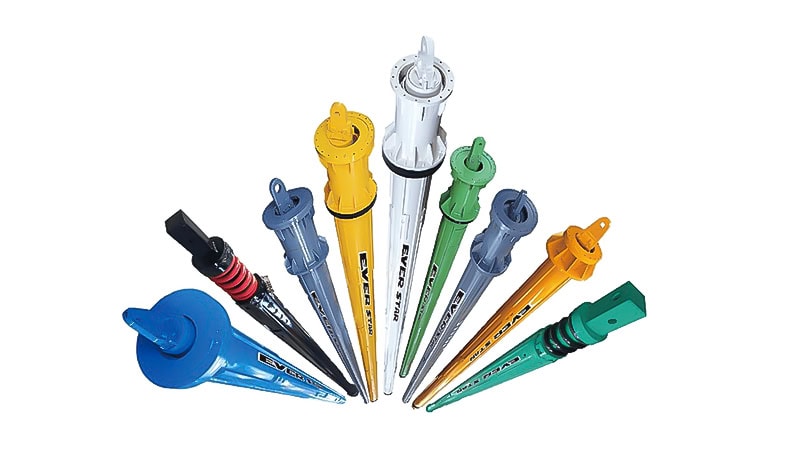
Key Takeaways:
- Kelly bar breaks can cause project delays, safety hazards, and costly repairs if not addressed.
- Common causes include excessive torque, mismatched rigs, metal fatigue, and poor handling.
- Following rig manufacturer’s guidelines is essential for safe operation.
- Using quality gear and correct manufacturing processes reduces breakage risks.
- Everstar Machinery ensures Kelly bars meet the highest durability standards for foundation drilling.
Kelly bars are crucial parts of rotary rigs in foundation drilling. When they fail, the entire drilling process grinds to a halt. A single instance of gear breakage can cost contractors thousands in downtime, create major safety risks for operators, and even harm surrounding equipment.
The reality is that most Kelly bar breaks do not occur by accident—they happen because of preventable problems like exceeding torque limits, improper rig-to-bar matching, or skipping maintenance procedures.
This article provides a guide for contractors and operators to understand more deeply what leads to cracks, breakage, or even completely broken bars, while also offering strategies to prevent them.
By applying these practices, you will not only improve service life but also reduce risks across construction sites.
A Closer Look at the Breakage and Cracking in Kelly Bars

Before we can solve the problem, it’s important to first understand what kelly bar breaks actually look like and why they matter. Not all cracks or failures are the same—some may be surface-level imperfections while others point to deeper structural issues in the bar.
By categorizing the different types of damage and examining their consequences in drilling rigs, contractors can make more informed decisions about repair versus replacement.
What Is Kelly Bar Damage?
A Kelly bar is a telescopic drilling tool designed to transfer force from the rotary drive into the foundation. Over time, these bars may develop cracks, lose structural strength, or suffer weld collapse. For reference, the U.S. Geological Survey’s research drilling program highlights how equipment durability plays a critical role in reaching project foundation goals.
At Everstar Machinery, we commonly differentiate between:
- Surface cracks, often caused by repeated stress cycles.
- Weld failures, where connections give way under load.
- Full fractures, where the bar is completely broken and unusable anymore.
Why Bar Breaks Are a Major Problem in the Drilling Process
When the gear damage occur, the impact goes beyond the tool itself:
- Safety hazards: A broken bar under extreme torque can endanger operators on the rig tracks.
- Delays: The entire drilling project comes to a stop until parts are replaced or repaired.
- Costs: Replacements for heavy-duty Kelly bars are expensive, and downtime drives up project budgets.
Common Causes of Breakage in Drilling Tools

Most Kelly bars damages stem from a handful of preventable issues. Whether it’s applying too much pressure, pairing the wrong Kelly bar with a rig, or neglecting handling practices, each mistake gradually weakens the tool until it becomes broken.
Understanding these causes allows operators to anticipate risks and implement smarter strategies to extend the service life of their drilling tools.
Excessive Torque and Crowd Force
Every Kelly bar has a rated torque limit. Pushing beyond it—especially in hard rock or compacted soil—creates uneven stress along the bar. Once the force exceeds design tolerance, cracks form and eventually expand into a fully broken gear.
Poor Rig-to-Bar Matching
One of the most overlooked problems in foundation drilling is improper compatibility. A rig with higher torque may quickly damage an undersized Kelly bar. Similarly, a mismatched connection interface increases wear at the joints, making bars prone to failure
Metal Fatigue and Material Defects
Repeated high-stress cycles, combined with materials that lack proper treatment, reduce resistance to wear. Without advanced heat treatment, bars cannot withstand the heavy loads of deep boreholes, especially in variable soil like sand and fractured rock.
Improper Handling and Storage
Even the best-manufactured Kelly bars can be ruined through poor handling. Drilling tools care processes become crucial.
Dropping bars on a construction site, dragging them across hard soil, or storing them incorrectly can introduce microscopic cracks that grow under normal use. Exposure to rain, rust, or corrosive conditions further weakens bar integrity.
Best Practices to Prevent Breakage of Kelly Bars in Foundation drilling

Prevention is always more cost-effective than repair or replacement. By adopting key factors to consider when choosing a Kelly bar, proven operational strategies and aligning them with manufacturer recommendations, contractors can minimize cracks and extend the durability of their gear.
These best practices are not just for experts—even a beginner’s guide approach can help machines operators ensure safer, smoother foundation drilling with fewer disruptions.
Follow Rig Manufacturer Torque and Depth Guidelines
Operators must inspect the torque capacity and depth charts before starting. Exceeding parameters not only causes faster wear but also dramatically increases the risk of ruptures. Calibrating drilling parameters ensures loads stay within safe ranges.
Optimize Drilling Techniques
Good drilling is about control, not brute force. Gradual start/stop methods avoid shock loading that damages bars. Adjusting feed rates when encountering hard rock or loose soil keeps the drilling process stable and prevents sudden failure.
Ensure Proper Rig-Bar Compatibility
Every rig has unique power capacity, section lengths, and keys for locking mechanisms. Mismatched bars accelerate wear and are prone to cracking. In cases where projects require unusual dimensions, Everstar offers custom-built Kelly bars—an essential solution for reliability in challenging foundation applications.
How Quality Manufacturing Reduces Breakage Risk

Even with proper handling and operation, the durability of a Kelly bar ultimately comes down to its construction. High-quality materials, enhanced treatments, and rigorous quality control checks make the difference between a bar that lasts for years and one that becomes prone to collapse early in its service life.
Find out how Everstar’s advanced manufacturing methods act as the first safeguard against Kelly bar damages.
High-Strength Steel and Precision Machining
Durability starts with superior materials. Everstar uses premium high-strength alloys such as 35CrMo, 30CrMo, ZT600, and Q550 steel pipes. Combined with precision machining, tolerances are tightened, and stress points are minimized—ensuring Kelly bars last longer under heavy use.
Advanced Surface Preparation
Processes such as quenching and tempering increase bar hardness and resistance to bending. Surface treatments, including shot blasting, further improve fatigue strength by eliminating microcracks that often appear in lower-quality bars.
These treatments, coupled with rigorous inspection at every stage of production, ensure every Everstar Kelly bar continues to perform, even under the toughest ground conditions. Certification-backed quality control means customers don’t have to guess—they can identify Everstar’s effective solutions as the industry benchmark.
FAQs – Kelly Bars
What causes most Kelly bar breaks?
Most Kelly bar damages occur due to operators exceeding torque ratings, pushing the bar beyond its designed limits, or mismatching rigs with inappropriate bar sizes.
Other common causes include poor handling during transportation, lack of regular maintenance, and continuous drilling in abrasive conditions such as rock or mixed soil without adjusting drilling parameters.
Can a cracked Kelly bar be repaired?
Minor surface cracks or worn welds can sometimes be repaired through professional welding and re-machining, but deeper or structural fractures usually mean the bar is too broken to safely use anymore. Using a inadequately fixed bar risks catastrophic collapse during operation, endangering both operators and expensive drilling equipment.
For this reason, it’s critical to inspect the extent of the damage carefully and consult expert technicians. In many cases, replacement with a stronger, certified Kelly bar is the safest choice.
How can I detect early signs of breakage?
Early detection often comes from routine inspection. Operators should look for visible hairline cracks, unusual wear around weld seams, or distortions in the sections. Listening for abnormal sounds, such as grinding or knocking during the drilling process, can also provide clues.
How do I choose the right Kelly bar for my rig?
Selecting the right Kelly bar begins with checking the rig’s rated torque and matching it to the bar’s maximum capacity. Section length, connection dimension, and locking keys must also align with the rig’s specifications to avoid accelerated wear or instability.
Contractors should also consider the foundation type and ground conditions—hard rock projects may require stronger, heat-treated bars for durability. When in doubt, consulting with experts ensures you get a bar that offers both performance and versatility.
How does Everstar ensure durability in Kelly bars?
Everstar places durability at the core of its manufacturing. Using premium high-strength steel such as 35CrMo and ZT600, combined with advanced heat treatments, we produce Kelly bars that resist bending, cracking, and wear even in tough foundation drilling environments.
Each bar undergoes shot blasting to enhance fatigue resistance, as well as strict dimensional checks to minimize stress points. Every product is certified and inspected to the highest standards. This guarantees that Everstar bars continue to deliver safe, long-term performance.
Conclusion – The Key to Longer-Lasting Kelly Bars in Foundation Drilling
Preventing Kelly bar breaks is not just about having stronger drilling tools—it is about correct operation, regular maintenance, and quality assurance in manufacturing.
By following torque guidelines, optimizing drilling techniques, and relying on Everstar’s durable, precision-engineered Kelly bars, contractors can minimize machines downtime, avoid costly repairs, and keep every foundation project on track.
Partner With Everstar to Prevent Future Bar Breaks
Worried about broken bars disrupting your foundation drilling operations? Don’t wait until you can’t drill a hole anymore. Contact Everstar Machinery today for expert advice, custom-designed Kelly bars, and dedicated support that keeps your rigs running at maximum versatility and efficiency.
Discover our catalog to find the right Kelly bar option for your project needs.